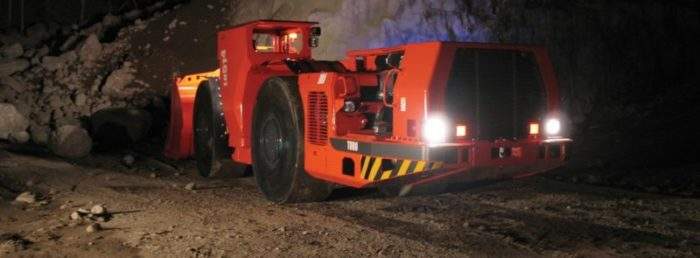
The 13th AusIMM Underground Operators’ Conference held on the Gold Coast from 16 to 18 October 2017. There were some 800 attendees from the underground mining industry, ranging from leading underground miners to innovative technology developers.
The theme of the conference was ‘Capturing the Opportunities: Communication, Collaboration, Innovation’, and authors had the opportunity to share their underground operational experiences and good practices with others in the industry. The key takeaways for SRK were exciting advances in technology, the speed of change, and the impact of increased automation.
Exciting advances in technology
Alongside the conference, the supplier exhibition was buzzing, with Atlas Copco launching their spin-out company, Epiroc, and Elphinstone showcasing their new direction in service vehicles, not to mention all the new digital technology on display. In all, there were 53 exhibitors.
Back in the auditorium, we heard how Glencore are improving their productivity through shift tracking and blasting performance at Ernest Henry using Orica’s Webex. MMG showcased their research into securing bogged rods in upholes, which was an eye opener in how ineffective current methods are, both from safety and productivity points of view.
Both companies are leaders in development of new technologies at their sites and have successfully implemented these innovations to improve their safety and performance.
Speed of change
The conference highlighted how fast things are changing in the operation of underground mines and provided food for thought about exciting prospects in the future.
Increased automation
In her keynote address, Lena Abrahamsson spoke of the challenges that the workforce will face with the implementation of automation and the loss of the more physical (read ‘macho’) image of the mining industry. She talked about how parts of the workforce are struggling to identify with the new image as the industry races towards the ‘digital mine’.
It is anticipated that the mine design process will become more interactive with drill and blast design being changed, whether that be the burden and spacing or the stope boundaries, based on real-time geological and geotechnical data. Ore and waste will be managed underground in a bucket-by-bucket process ensuring that only quality ore and ore blends are hauled or hoisted to the surface, which will have the flow-on effect of minimising the surface disturbance through waste dumps and tailings dams. With technological advances, we will also be able to mine deeper and in environments that previously have been untenable due to the hazardous conditions posing risk to the workforce, whether that be highly stressed, extremely hot or toxic atmospheres.

